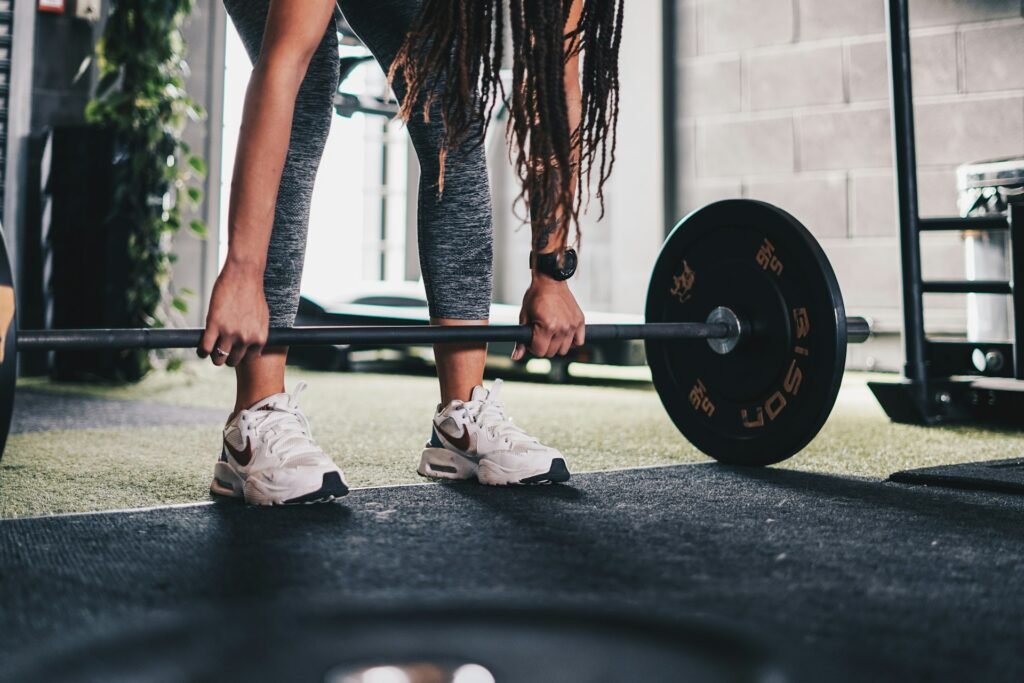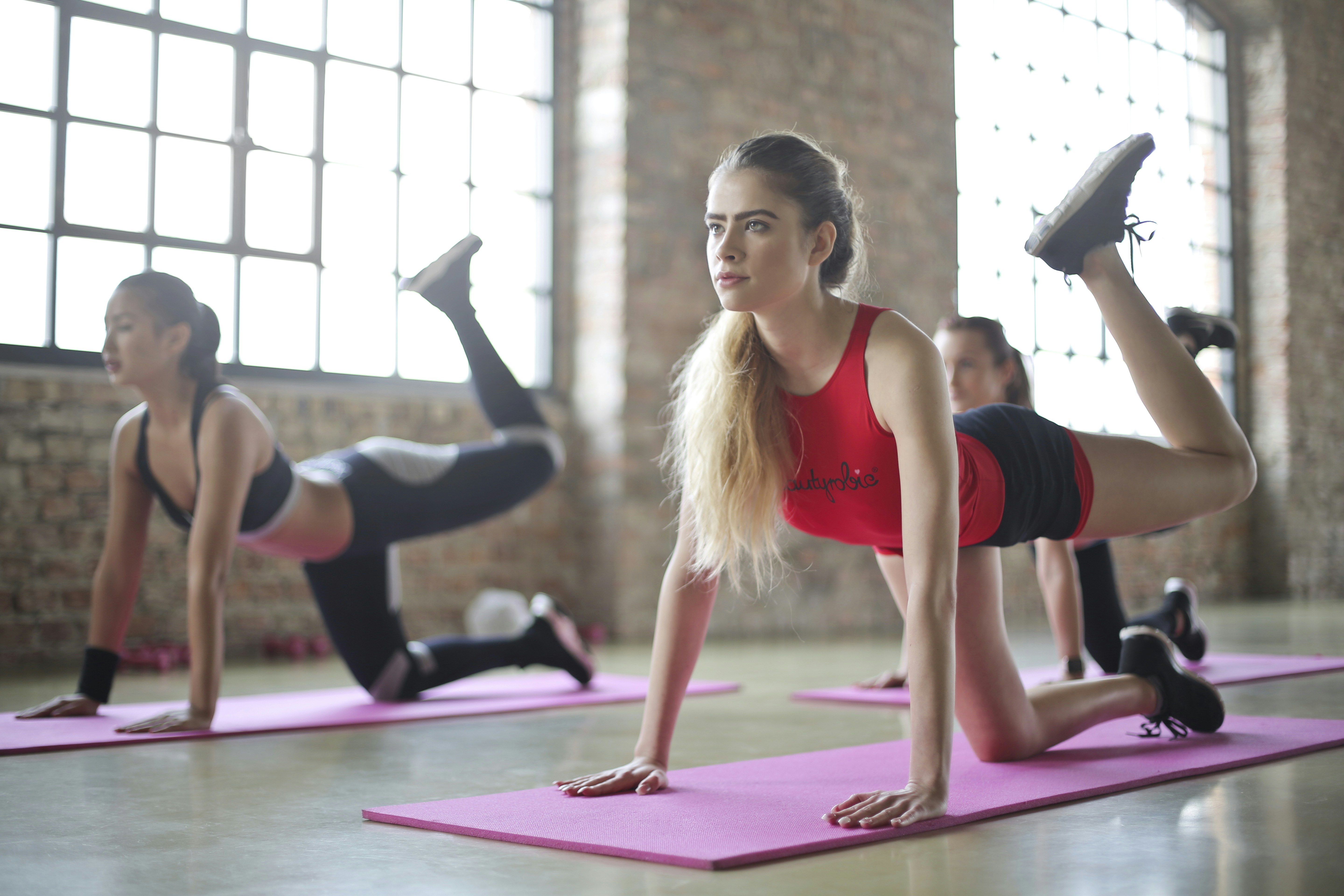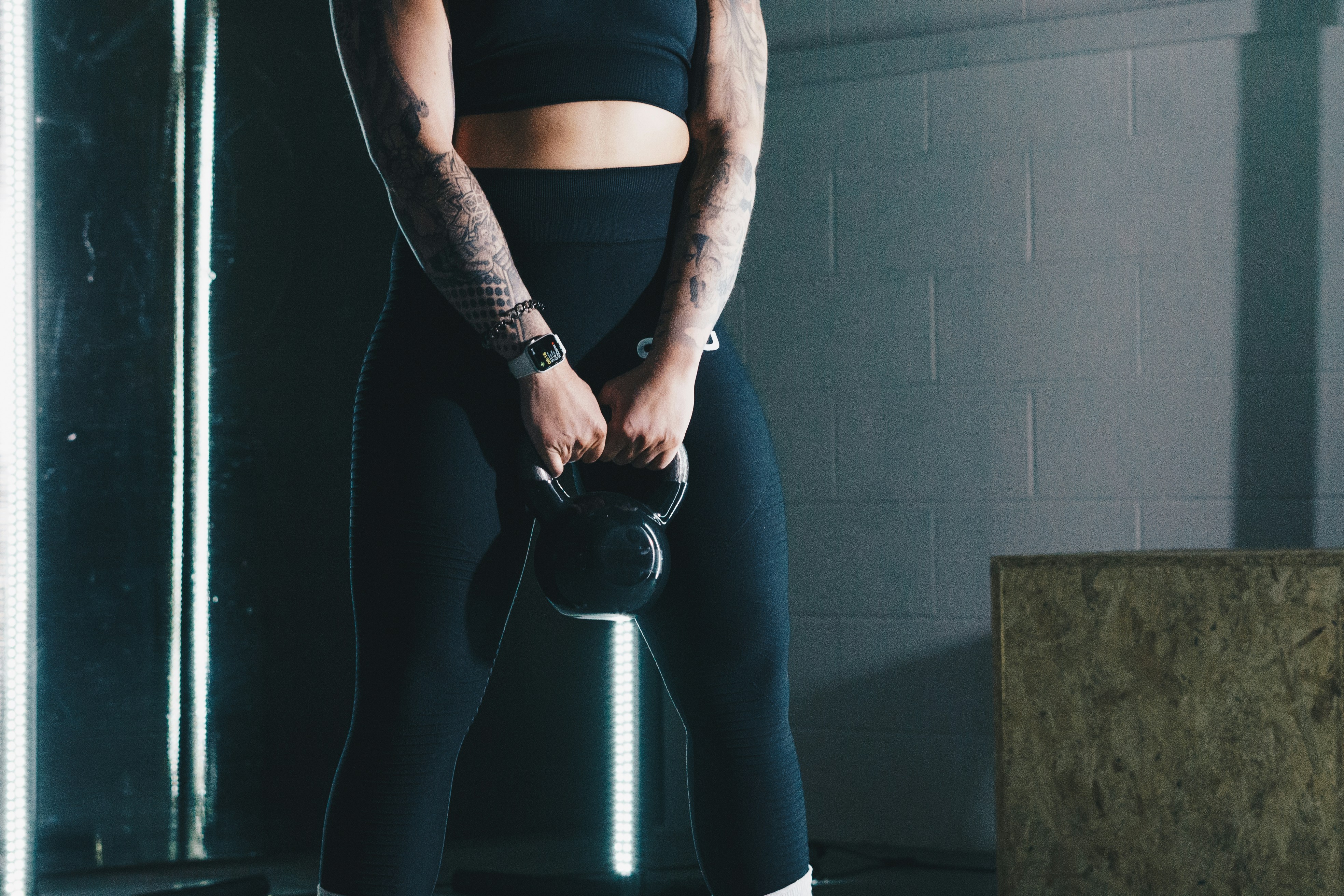
Photo by Ambitious Studio* | Rick Barrett on Unsplash
The cable kickback is an effective exercise for targeting the glutes, specifically helping to improve the mind-muscle connection. This connection is crucial, as it’s the neurological link between your brain and muscle fibers, allowing for better control and efficacy during workouts.
Using a cable machine for kickbacks provides constant tension throughout the entire range of motion, unlike free weights, where tension can diminish at certain points. This continuous tension helps activate the glutes more consistently, promoting muscle growth. According to a study published in the Journal of Strength and Conditioning Research, this form of exercise can lead to significant improvements in muscle activation compared to other glute-targeting exercises (NCBI).
To perform a cable kickback, attach an ankle strap to the low pulley of a cable machine, set to a weight you can control, and secure the strap around your ankle. Stand facing the machine, holding onto it for support, and slowly kick your leg back and up, keeping your leg straight. Return to the starting position and repeat.
This exercise not only focuses on the glutes but also engages the hamstrings and lower back. It’s particularly beneficial for those looking to diversify their glute training routine for optimal results. As it is also low-impact, it can be a good option for people with joint issues who still want to maintain an active exercise regimen.
For more fitness insights, you might find How Long Should I Wait to Do Cardio After Lifting Weights helpful to maximize your workout recovery and performance.
Introduction to Barbell Hip Thrust Alternatives
The barbell hip thrust is a popular exercise for developing strong glutes. However, it isn’t always the most convenient or comfortable option. Setting up the barbell can be cumbersome, and heavy weights can put a strain on your body. Additionally, you might not have access to the necessary equipment or prefer variety in your workout routine.
A well-rounded approach to glute training can involve several alternative exercises that are easier to set up, less taxing on the body, or simply provide a change of pace. Exploring these alternatives helps you target the glutes effectively while avoiding the potential pitfalls of repetitive barbell hip thrusts.
According to recent research, developing strong glutes is essential not only for improved athletic performance and lifting but also for general health and stability [^1^]. For instance, strong glutes aid in reducing lower back pain and improving overall posture.
In this article, we will explore several effective alternatives to the barbell hip thrust, such as the glute bridge, hyperextension, and kettlebell swing. These exercises offer various benefits and can be easily incorporated into your training regimen to keep your workouts diverse and engaging.
For those looking to expand their cardio regimen while targeting muscle groups, check out our guide on steady-state cardio examples.
[^1^]: Neto WK, Soares EG, Vieira TL, Aguiar R, Chola TA, Sampaio VL, Gama EF. Gluteus Maximus Activation during Common Strength and Hypertrophy Exercises: A Systematic Review. J Sports Sci Med. 2020 Feb 24;19(1):195-203. PMID: 32132843; PMCID: PMC7039033.
Source: BarBend
Advantages of Diverse Glute Workouts

Photo by bruce mars on Unsplash
Diverse glute workouts present multiple benefits that can improve your overall fitness routine. Firstly, varying your exercises can target different parts of the gluteal muscles, ensuring a well-rounded and balanced workout. For instance, while barbell hip thrusts are excellent for the upper glutes, movements like cable kickbacks focus more on the gluteus medius and minimus.
Incorporating different exercises can also help in reducing the risk of injury. Repeatedly doing the same movement can lead to strain and wear on specific muscles and joints. By switching exercises, you distribute the stress more evenly, potentially reducing overuse injuries.
Additionally, diversity in workouts keeps your routine engaging and challenging. A study published in the Journal of Strength and Conditioning Research found that varying exercises can lead to greater muscle activation and growth compared to sticking to one exercise. This can result in more significant strength gains and better muscle definition.
Lastly, different workouts can cater to different fitness levels and needs. For instance, exercises like the glute bridge are simpler and more accessible for beginners, while advanced movements like reverse hyperextensions offer high gains for experienced lifters. This inclusivity makes it easier for everyone to achieve their fitness goals.
For a comprehensive guide on glute workouts, you can check out this article from MasterClass.
Looking to vary your routine even further? Consider mixing in some low-impact cardio exercises like those detailed in our Low Impact Cardio for Bad Knees article.
Glute Bridge: The Simplest Substitute
The glute bridge is one of the most straightforward yet effective substitutes for the barbell hip thrust. This exercise primarily targets the gluteus maximus, which is the largest muscle in the human body, as well as the hamstrings. Performing the glute bridge can help enhance hip extension, increase core stability, and strengthen the posterior chain without the need for any specialized equipment.
One of the key benefits of the glute bridge is its accessibility. Since it requires no more than a flat surface to lie on, it’s suitable for at-home workouts and can be performed by individuals at any fitness level. According to fitness experts, glute bridges can be performed anywhere and don’t require gym access or time-consuming setup source.
To execute a glute bridge correctly:
- Lie on your back with your knees bent and feet flat on the floor, hip-width apart.
- Place your arms by your sides with your palms facing down.
- Engage your core and squeeze your glutes as you lift your hips towards the ceiling.
- Hold the top position for a second, ensuring your body forms a straight line from your shoulders to your knees.
- Slowly lower your hips back down to the starting position.
Incorporating glute bridges into your workout routine can help prevent lower back pain and improve overall athletic performance by stabilizing the hips and pelvis. This exercise is ideal for anyone seeking a simple yet effective way to build stronger glutes and hamstrings.
Hyperextension: Focus on Your Posterior Chain
Hyperextensions are an effective exercise for targeting the posterior chain, which includes the lower back, glutes, and hamstrings. This movement is especially useful for those looking to improve their deadlift and squat strength. According to JC Deen from BarBend, hyperextensions can be integrated into most strength or hypertrophy programs for added volume and muscle activation source.
One of the key benefits of hyperextensions is their ability to activate the glutes. During the exercise, focus on internally rotating your shoulders and rounding your upper back slightly. This way, the majority of tension will be placed on your glutes. As you descend, you’ll feel a good stretch in your hamstrings, which aids in improving flexibility and muscle engagement. Remember not to solely rely on your lower back by keeping it slightly rounded throughout the movement.
Statistics suggest that a balanced posterior chain can help alleviate lower back issues. For example, weak glutes and tight hamstrings often contribute to lower back pain. Incorporating hyperextensions in your routine can make a significant difference by strengthening these muscles.
For those who suffer from tight hamstrings, check out our advice on finding the perfect Romanian Deadlift alternative in our article here.
By adding hyperextensions to your workout regimen, you will build a stronger, healthier posterior chain, ultimately enhancing your overall athletic performance and reducing injury risk.
Reverse Hyperextension: Low Impact, High Gains
Reverse hyperextensions are a valuable addition to any workout routine, particularly for those seeking low-impact exercises with significant benefits. This exercise primarily targets the posterior chain, including the glutes, hamstrings, and lower back.
Research published in the Journal of Strength and Conditioning Research indicates that reverse hyperextensions effectively engage these muscles while minimizing stress on the lower back compared to traditional hyperextensions (Lawrence et al., 2019). This makes them ideal for individuals needing a safer yet effective alternative to heavier lifts like deadlifts or good mornings.
To perform a reverse hyperextension, lie face down on a hyperextension bench or a stability ball with your legs hanging off the edge. Lift your legs by squeezing your glutes and hamstrings until they are in line with your body. Hold briefly at the peak, then slowly lower your legs back to the starting position. Aim for controlled movements to maximize muscle engagement.
One significant advantage of reverse hyperextensions is their potential for reducing lower back pain. Strengthening the glutes, hamstrings, and lower back muscles can provide better support and stability to the spine, which is especially beneficial for those with existing back issues.
Additionally, incorporating reverse hyperextensions into your routine can enhance hip mobility and improve overall posture. Increased hip mobility translates into better performance on various compound movements like squats and deadlifts.
For more exercises geared toward overall fitness improvement, check out our guide on low impact cardio for bad knees.
Kettlebell Swing: Dynamic Strength and Endurance

Photo by Ambitious Studio* | Rick Barrett on Unsplash
The kettlebell swing is a versatile exercise that targets multiple muscle groups, including the glutes, hamstrings, and core, making it an effective option for building both strength and endurance. Although it lacks the extensive research backing of other exercises, it is recognized for its beneficial impacts on muscular endurance and overall fitness.
According to Carl Valle, the kettlebell swing’s ability to improve sports performance remains debated primarily due to the challenge of progressive overload with kettlebells [^1]. Nonetheless, kettlebell swings are noted for promoting muscular recruitment in the posterior chain, which is crucial for various athletic activities. For instance, a study reviewing electromyography (EMG) data concluded that the kettlebell swing activates muscles in a way that supports dynamic movements, hence its use for conditioning and general fitness.
While kettlebell swings may not yield significant hypertrophy or speed gains, they are excellent for aerobic conditioning. Research indicates that kettlebell exercises can improve mitochondrial efficiency, which enhances the body’s ability to utilize oxygen during prolonged activities. This makes kettlebell swings an excellent choice for those looking to increase their cardiovascular endurance alongside strength.
Moreover, kettlebell swings are often incorporated into high-intensity interval training (HIIT) routines, which are known for burning significant calories in a short duration. In fact, performing an intense kettlebell swing session can help burn substantial calories, although specific claims like “one calorie per swing” remain contentious.
If you’re recovering from an injury or want a low-impact alternative that still packs a punch, the kettlebell swing is a viable option. It distributes load through the hips and lower back, reducing strain on the knees, which is useful for individuals dealing with joint issues.
[^1]: Source: Carl Valle’s article on SimpliFaster